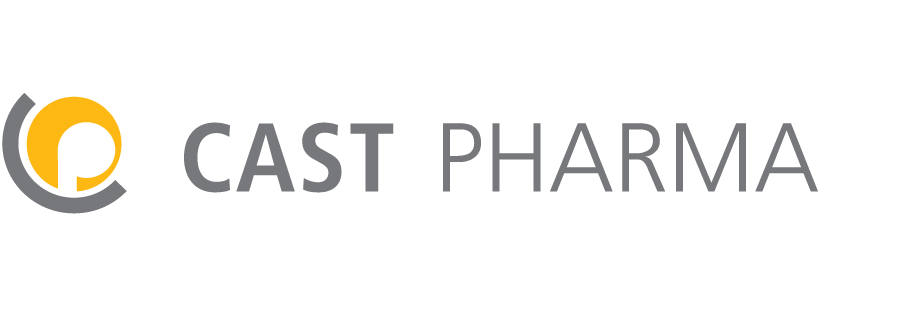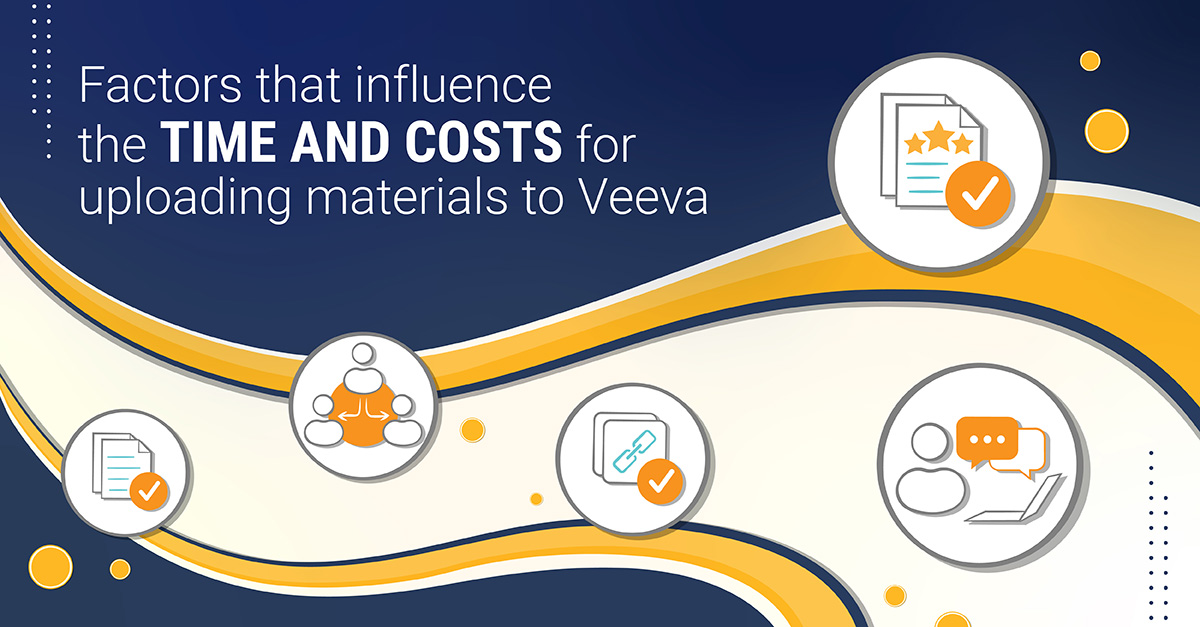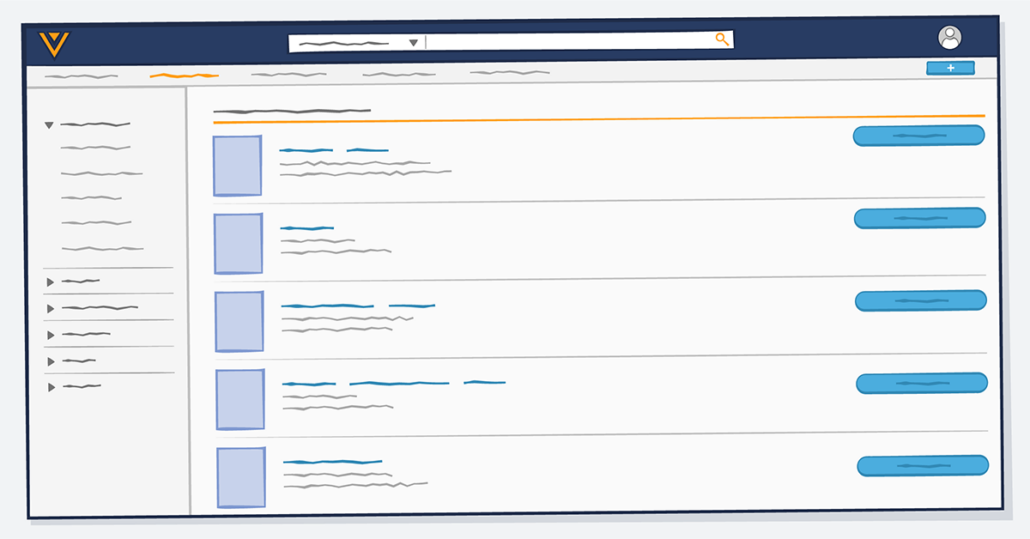Uploading materials to Veeva: factors that influence time and costs
Whether you work at a large or small pharma company, your organization almost certainly has a formalized review process for ensuring the non-promotional materials your medical affairs team uses are accurate, in line with local regulations, and free of content that poses unacceptable legal risks, such as lawsuits from competitors. To manage review processes and keep track of reviewers’ decisions for consistency and accountability, companies usually rely on content management software. The most widely used in the life science industries is Veeva.
Many pharma companies have a standard operation procedure (SOP) requiring agencies that develop content to upload materials they’ve created to Veeva for review and approval. The time those agencies need and the associated costs can vary significantly from project to project and company to company. Here are some the factors with the biggest impact on time and costs.
Project-specific factors
Some of the cost factors spring from the scope of the project. These are usually clear as soon as you have an idea of a material’s length, subject matter, and usage. The most important questions are: how long is the material? How many references are cited? And are those references already available in Veeva?
A 3-page storyboard for a 2-minute long video will obviously need less time to upload to Veeva than a 120-page AMCP dossier or a MSL presentation with 90 slides. Likewise, a PubExplainer deck for a single publication will likely have a single reference whereas a longer material covering epidemiology, unmet medical need, treatment landscape, or a product’s entire clinical development program can easily have well over 50 references. The more references cited, the more links and anchors, and accordingly, the more time needed by your agency.
Company-specific factors
Perhaps less obvious are the time and costs that arise from the requirements your organization has for Veeva uploads. Different companies use Veeva in different ways and SOPs can vary widely. This means that different amounts of working time can be needed to satisfy your company’s review and approval standards. Along with the length of the material and the number of references cited, below are factors that can influence the working time needed.
Length of mandatory Veeva training
Does your company require that new agencies attend a mandatory training before being granted access to Veeva? If so, how long is that training? There are companies that, for example, send their agency partners a 45-minute recorded training session and ask them to sign a form confirming that they’ve watched and understood it. There are other companies that have several eLearning modules covering their standard operating procedures in addition to multiple live training sessions which all together require over 8 hours for completion.
Your company’s review process
The steps involved in this process can look very different and take significantly more or less time from an agency. It would be impossible to give an exhaustive list here, but by way of example, here are a few steps that can take more time from an agency:
Concept review
Does your company require LMR approval of a concept before a project can move forward? This means not only the final material but also a general outline or concept needs to be submitted for review.
Reference review
Does LMR review new references while reviewing the material they’ve been linked to? Or they have a separate process where new references need to be uploaded and submitted for review before any anchors can be created and linked to in a material?
QC review
Do agencies submit materials to an LMR coordinator or project owner at your company for initial QC prior to LMR submission? Or do agencies submit materials directly to LMR?
LMR scheduling and coordination
Does someone on your team coordinate with reviewers, ensuring their availability and balancing their review workload? Or are agencies expected to reach out directly to reviewers?
Live review meetings
Are agencies required to attend review meetings? LMR is often asked to provide feedback within a certain time frame “offline” and then meet on a pre-scheduled day for “online” review and discussion to align feedback or discuss any questions or concerns that may have arisen. Some companies require at least one representative from an agency whose material is under LMR review to be present, while other companies only suggest so, and still others do not have agencies attend live review sessions at all.
Alignment of project owner on your team with LMR
The factor that can have the single biggest impact on costs and which is the most challenging to gauge from the outset of a project is how closely aligned your team is with LMR. Are LMR reviewers consulted prior to submission to ensure the project owner on your team is aware of their concerns from the beginning of the project? Do the key stakeholders on your team who are giving feedback on messaging and the overall content for the material have experience working with your LMR reviewers? Or are they giving feedback that may shape the content of a project in such a way that it is more likely to have significant LMR feedback?
Among the more time-intensive “surprises” that can happen during LMR review are:
- requests to add more content that would contextualize data presented;
- requests to re-write for an overall change of tone, e.g., from promotional to non-promotional wording;
- requests to use a different design template or guide, e.g., using an unbranded template instead of a branded template; or
- rejection of a material without any further review because the content is not appropriate for the intended use and audience, e.g., interim phase III efficacy data for a drug without FDA approval presented in a proactive MSL slide deck.
Minimizing these kind of surprises can help avoid delays and projects running over budget.
No one-size fits all solution
Overall, the scope and budget can be tailored to the needs of your company’s review process while also building on your organization’s previous work to streamline the review process. So for example, if permitted, it can save an agency significant time if they can upload a derivative material to Veeva for LMR review with a link to an approved material without linking directly to the references cited in the original material. This may be permitted in cases where the content from the original material is being presented unchanged in a different format, such as an animated video based on a print infographic. The better you know your company’s review process and the more familiar you are with your reviewers, the more easily you can work with your agency partners to identify acceptable time and cost saving measures while making sure that your materials contain clear and accurate, non-promotional medical information.
To read more about the importance of choosing agencies that organize their workflows with LMR and Veeva in mind, check out our article here: How an agency’s grasp on approval processes can make or break your medical content



